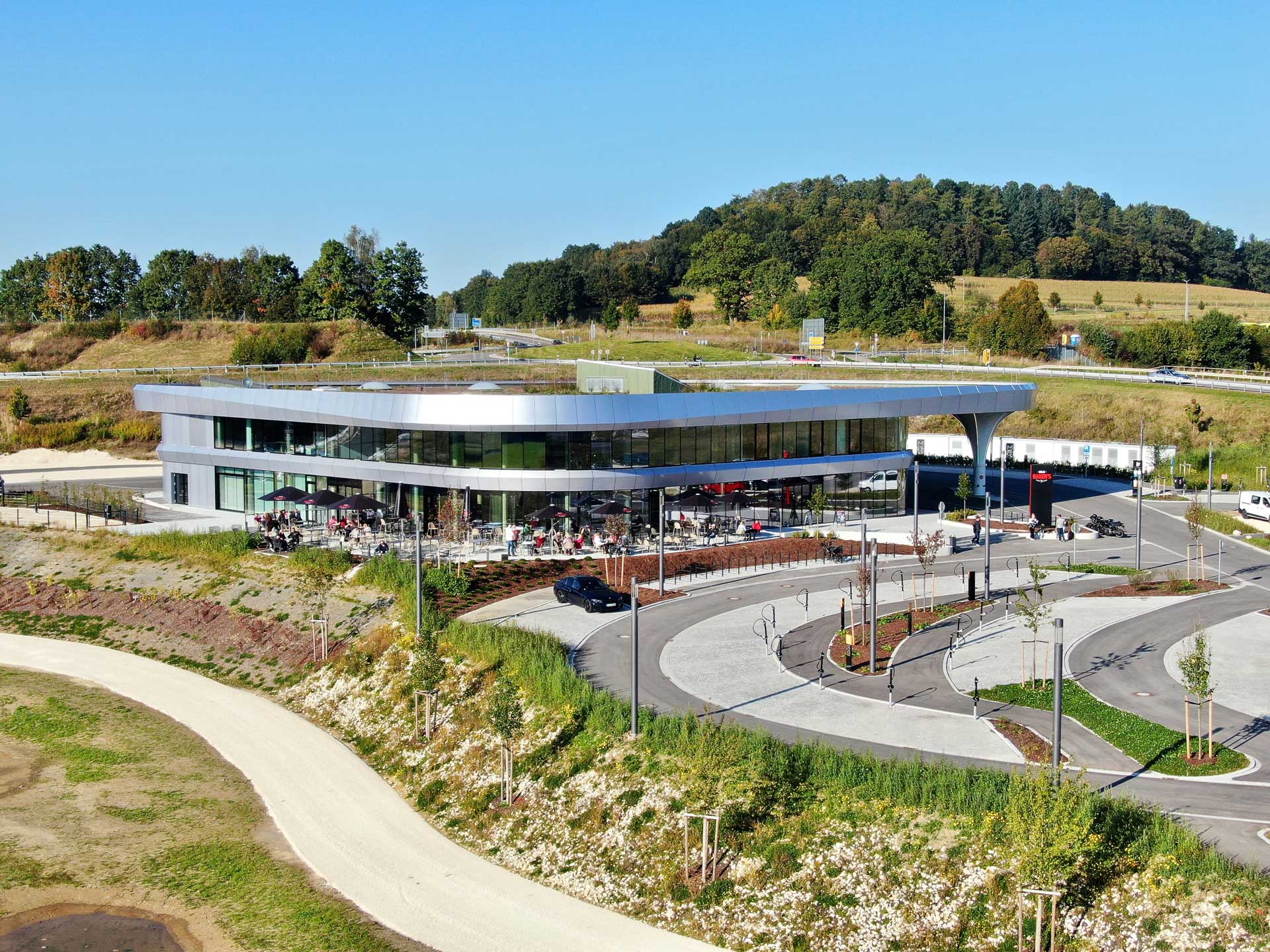Electromobility: Sortimo Campus, Zusmarshausen, Germany


The world's largest solar filling station is currently located on the A8 freeway next to the Zusmarshausen in Bavaria. After completion of the Sortimo Innovation Park, up to 4,000 electric vehicles can be charged there daily with "green" electricity at 120 normal charging points (max. 60 kW) and 24 rapid charging points (max. 350 kW). E-mobilists don’t have to be idle while filling up: They can spend time at a café and shops within the Innovation Park, which will also feature office and conference rooms innovative communication technology.
In collaboration with Steinbacher Consult, Transsolar developed the net-zero energy concept for the site and evaluated it with dynamic simulation. As expected, the energy requirement for heating and cooling the buildings is considerably lower than the planned electricity requirement for the electric cars of future customers. Therefore, the focus is on the renewable generation and storage of electricity. Due to the necessary cooling of the transformer station, battery storage and electric cables, waste heat is generated all year round, which is used in winter by a reversible electric heat pump. In order to calculate the components as closely as possible to demand, a synthetic load profile for e-mobility and heat pumps was generated using charging profiles from findings at comparable locations and the results of the building simulation for this location.
To determine the economically optimal sizes of the solar power system and capacity of the battery storage, Transsolar used a simulation model for the dynamic coupling of photovoltaics, electricity grid, electricity storage and electrical load that have successfully been used previously in other industrial projects.
The results show that a 3,000 kWp PV system on the roof of the factory hall with a 1,200 kWh Li-ion storage is the optimal solution for this site. The plant is not an „energetic island.“ It is connected to the public grid and feeds into it or receives electricity if required. The "harvested" amounts of energy should be used strategically. The operator has to decide whether the regulation covers the own consumption in the best possible way or prefers to intercept load peaks during the grid transfer. It is thus ensured that the majority of the energy for the electromobility comes from sustainable sources.





